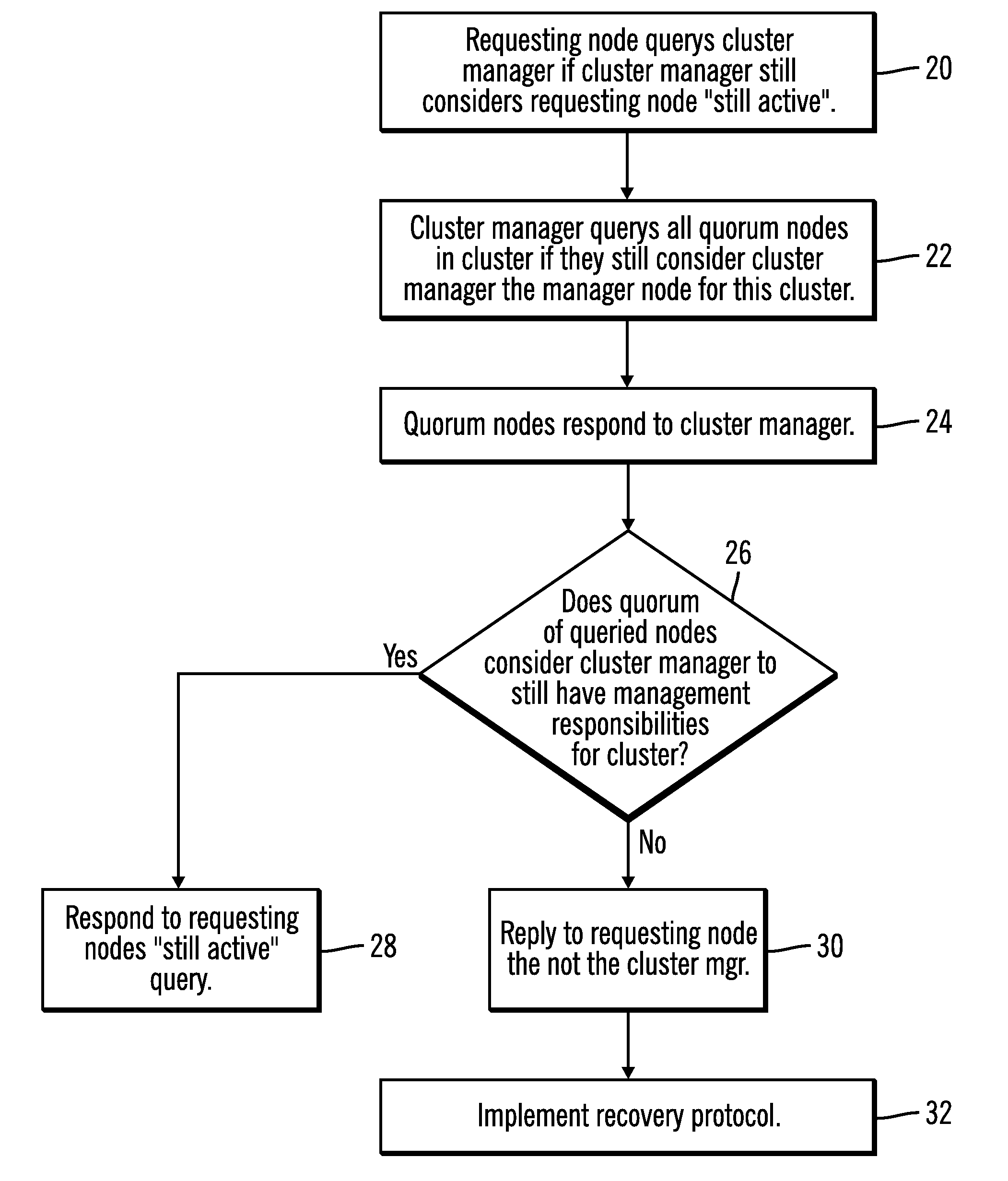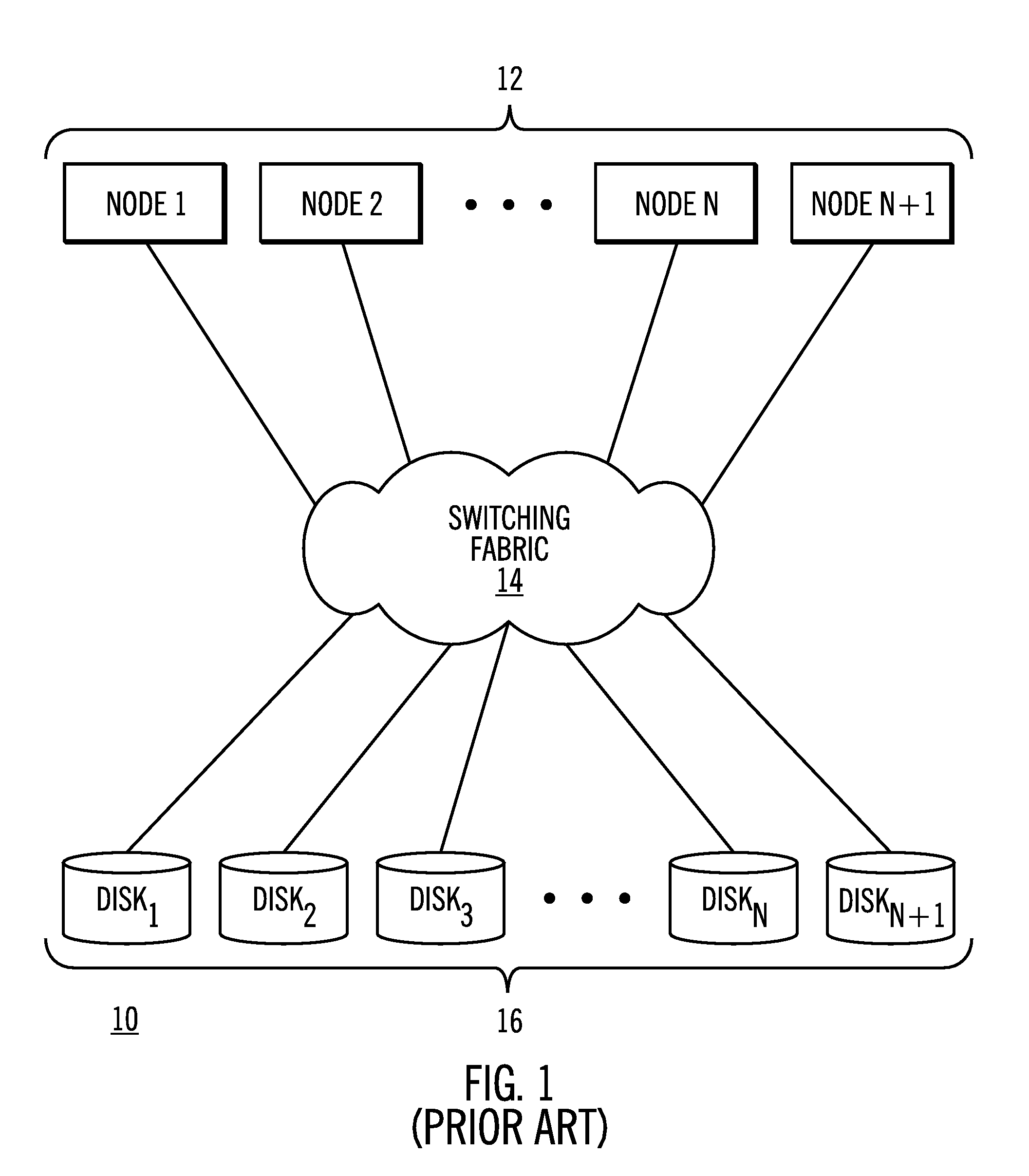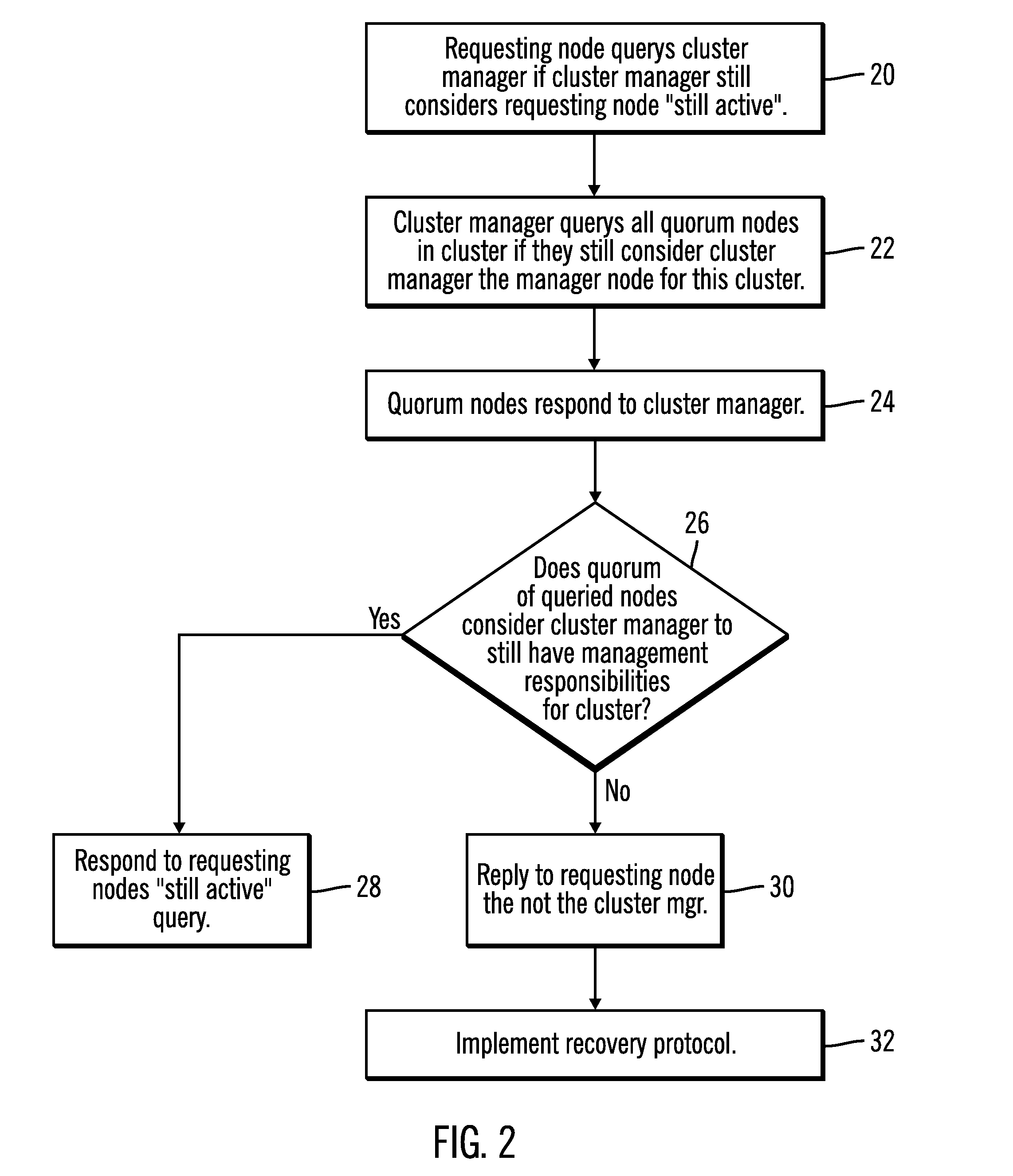File system mounting in a clustered file system
a file system and file system technology, applied in the field of distributed file systems, can solve the problems of difficult cooperation or sharing of resources between partitioned programs, complicated programming, and programs that must be partitioned to run on multiple machines, so as to prevent the installation of a file system quickly and efficiently.
- Summary
- Abstract
- Description
- Claims
- Application Information
AI Technical Summary
Benefits of technology
Problems solved by technology
Method used
Image
Examples
Embodiment Construction
[0018]What is provided is a method which establishes a novel protocol for ensuring that a failed node in a clustered file system of active nodes does not mount a file system subsequent to a failure which places that node out of communication with one or more nodes in the cluster. The failed node is quickly and efficiently prevented from unfencing itself and mounting a file system.
[0019]One skilled in this art would be readily familiar with the concepts inherent in parallel file systems and those associated with parallelism in the file / data sharing context. In addition, one would be skilled in the art of computer programming as it relates to nodes, tokens, locking, and the like, in a clustered file system environment.
[0020]For purposes hereof, a machine readable medium is an article of manufacture such as a floppy disk, a high capacity read-only memory, an optically readable compact disc or CDROM or DVD, a tape, a transmission type media such as a digital or analog communications lin...
PUM
 Login to View More
Login to View More Abstract
Description
Claims
Application Information
 Login to View More
Login to View More - R&D
- Intellectual Property
- Life Sciences
- Materials
- Tech Scout
- Unparalleled Data Quality
- Higher Quality Content
- 60% Fewer Hallucinations
Browse by: Latest US Patents, China's latest patents, Technical Efficacy Thesaurus, Application Domain, Technology Topic, Popular Technical Reports.
© 2025 PatSnap. All rights reserved.Legal|Privacy policy|Modern Slavery Act Transparency Statement|Sitemap|About US| Contact US: help@patsnap.com



